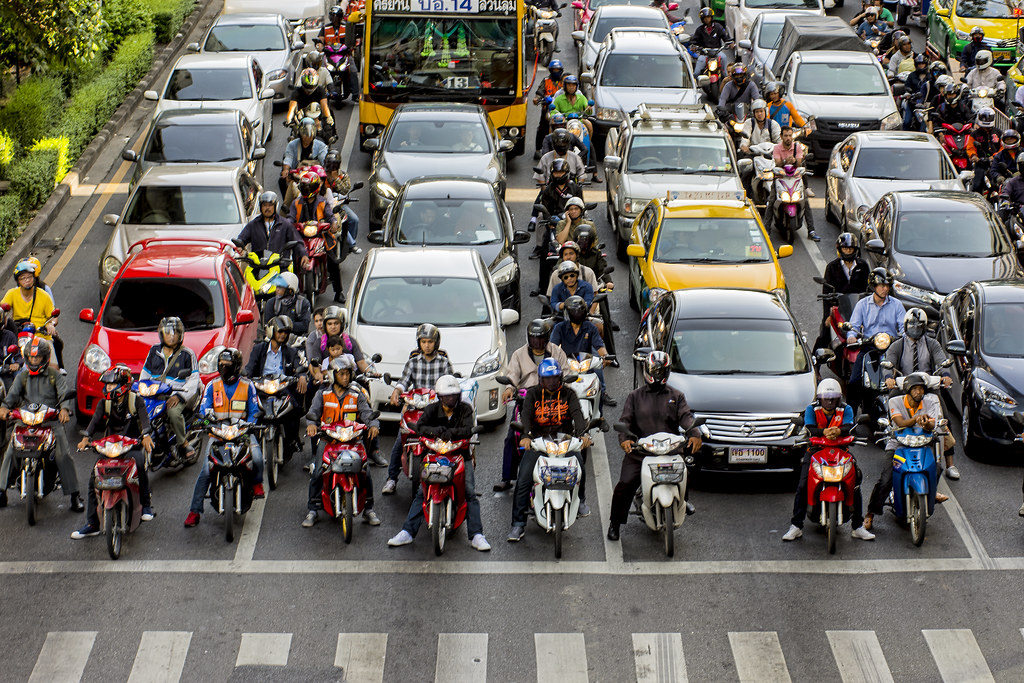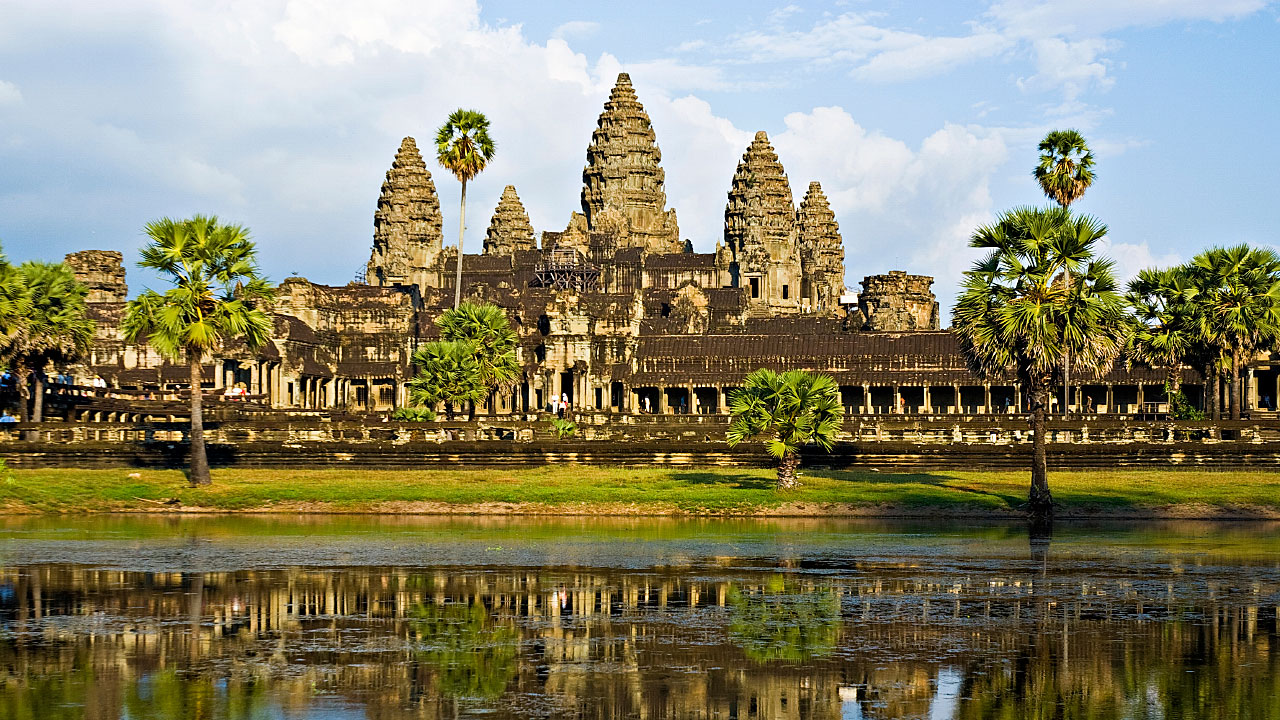NO TABOO, we will tell you EVERYTHING about pollution in Thailand.
Pollution in Thailand is a recurrent subject which still scares the expats or the foreigners who wish to move there permanently. In this article, we decided to go beyond the ‘hearsays’ around this problem, and to approach it in a factual and objective manner. Is Thailand as polluted as we think? All our answers here. 👇
As the proverb says, “April showers bring May flowers”. Unfortunately, this does not concern the 69 millions inhabitants of the Kingdom of Thailand. Locals, expats, tourists, all of them know this air sometimes so hard to deal with. Lots of hypotheses exist … Bangkok would be one of the most polluted cities of the world, Chiang Mai would be easier to live in daily, the economic growth of the capitale could be one of the direct causes of this problem …
But is it actually true? Is the air quality in Thailand as bad as we think? Is it true to say that Bangkok is a worst pupil than Paris, or New-York? Today, we decided to pay attention to this subject in particular, to separate fact and fiction with real numbers and studies to back it up.
Pollution. The present era’s major problem. According to the World Health Organisation (WHO) in 2016, 91% of the world population were living in places where their air quality regulations were not respected. We estimated at 4,2 millions the number of premature deaths caused by ambient pollution this same year. 91% of these premature deaths happened in countries with low or intermediary incomes, the highest number coming from the WHO Regions of Southeast Asia and of Occidental Pacific.
The WHO estimates that 7 millions people die prematurely each year because of pollution – ambient air and internal pollution on accommodations – and 9 people out of 10 breathe an air charged with a high level of pollutants.
Today, we are going to pay a special attention to the Kingdom of Siam. In order to have a common tool to measure and analyze, we will take PM10 and PM2.5 that the WHO itself describes as being the most nocive for health.
What is PM ; MP10 ; and MP2.5?
PM, or Particulate Matter, is an indicator for the air pollution. It affects more people than any other pollutant. Its main components are sulfate, nitrates, ammonia, sodium chloride, black carbon, mineral dust and water … To sum up, it consists of a complex mixture of solid and liquid particles suspended in the air.
PM10 names the particles with a diameter of 10 microns or less (≤ PM10). These can deeply penetrate within people’s lungs.
PM2.5 names the particles with a diameter of 2.5 microns or less (≤ PM2.5). These are the most health-damaging particles: they can penetrate within both the pulmonary barrier and the blood system thanks to their very small size.
BANGKOK
How is Bangkok with the pollution?
Bangkok is the 2nd province the most polluted of Thailand, after Saraburi. 20% of the Kingdom population is concentrated there as well as more than 65% of the total emissions of the country.
As you can see here, the index of air quality around Thonburi Power Sub-Station in Bangkok on the 26th of June 2018 is 108 and considered as unhealthy for what we call “sensitive groups” of people. It is actually a usual number, even “good” for the thai capitale.
Did you know that? You can consult the daily air quality index yourself from your location by clicking HERE!
*** This data depends on the location and not the city. ***
The annual average air quality in 2017 was 72, with a maximum reached superior than 300, which is twice worst than London, Paris, Los Angeles and New-York ; but better than Seoul, Shanghai and Beijing.
In January and February 2018, the angels’ city – with 13 other provinces of the Kingdom – had an alarming pollution period which obliged the government to alarm the people the most sensitive to suffer from it – children and elderly. The MP2.5 rate had exceeded the WHO’s recommendations which stipulate that these ones must not be over 50 µm/m3 during more than three days per year. To give you an idea, the air quality index in Bangkok was 153 so “unhealthy” on the Tuesday 27th of February late morning against 60 in Paris in the meantime.
Tara Buakamsri, the director of Greenpeace Thailand, actually sounded the alarm by explaining the situation with a simple sentence: “This cannot continue like this ; Bangkok is suffocating!”.
How comes Bangkok is that polluted?
The reasons of this degradation are clearly identified. One of the main ones is the exponential increase of vehicles, in one of the cities the most blocked of the planet. In 2018, Thailand counts more than 37 268 655 registered vehicles. Since January, 2 456 686 vehicles have been registered, according to the Urban Transportation Department.
However, we should consider that some districts of Bangkok do have a score much better than others. Therefore, the level of pollution depends on the location you are, but also on the wind, because the pollution tends to stay and to stick on particular places if the wind does not push it away from the city, and wind is pretty rare during warm days in Bangkok.
Bangkok is polluted, but …
… but is it much more than other cities?
Contrary to what we could think in general, even if Bangkok is pretty high on the most polluted cities in the world, it is not that far from our european cities. For example, Paris in on the 17th place against Bangkok which is on the 13th one for a tiny difference of only 6 µm/m3.
Another more concrete example. The WHO reported the pollution concentration of the ambient air in the cities worldwide in 2015. AMONG OTHERS, Thailand highlights annual PM2.5 of 22,4 and PM10 of 41,4. Italy signals an annual concentration of PM2.5 of 22,7, MP10 of 32. As you can see yourself, the particles concentrations in Thailand do not vary that much from Italy’s ones, which could be a surprise for both countries’ residents.
But, then, what are the reasons of a feeling that different from one city to another like these ones? Several hypotheses present themselves to us. Obviously, the first one we should consider is the temperature. Bangkok is the city which has been elected as the warmest of the world by the World Meteorological Organization with an average annual temperature of 28°C. The humidity rate can even reach 90% during some months of the year.
Thus, these factors explain that in spite of the particles rates more or less equivalent to some european cities’ ones, the feeling is much stronger when we live within the thai capitale.
To sum up, more than just numbers on particles levels or other molecules in the air, other factors should be taken into account in order to better discern the living conditions within the city. In order to correctly judge the cities’ situations, all the factors have to be taken into consideration.
CHIANG MAI
How is Chiang Mai with the pollution?
We often hear people saying that Chiang Mai is more polluted than Bangkok, but actually the 2nd biggest city of Thailand is on the 3rd position of the Kingdom’s most polluted cities ranking. Nevertheless, the difference between both cities is not that obvious.
How comes Chiang Mai is that polluted?
The most plausible hypothesis here is the practice of agricultural burning that has a debilitating effect on the North of Thailand air which is the home for lots of agricultural regions.
At Spring time, between February and May, farmers burn the fields to let the place free for new cultivations, which contributes to the increase of the particles quantity on the air up to inacceptable and dangerous levels (> 120 μg / m3). Gradually, this bad air of Chiang Mai’s agricultural regions mixed with the Myanmar frontier’s one creates a true nocive environment for Northern inhabitants, where the number of hospitalisations or pulmonary problems does not stop increasing.
THAILAND
Between 1983 and 1996, the thai economic growth has been one of the fastest ones in East Asia. This incredible rise increased the income per inhabitant of an average of 7% per year, but it also created serious problems, among those the transportation saturation or else the atmospheric pollution aggravation. It should be noted that, for example, 5 asian countries actually reject 60% of the world plastic and Thailand is on the 4th position.
Thailand VS Greenpeace.
The main advice here is not to judge a book by its cover and to carefully look at the information and given data. Indeed, very often, key points are missing. For example, if you take a look at Surat Thani, you will find a good score – 26 on the 26th of June – but if you look more carefully, the PM2.5 which are the most nocive for health, are not posted – Editor’s note, Surat Thani is still a sane destination of the country.
The missing PM2.5 are actually the main problem that Greenpeace gave rise to talking about Thailand, accusing the Kingdom to “mislead people” . Because yes, its measure stays missing on lots of Kingdom’s places, with no obvious reasons.
Thailand VS Pollution.
Most of the external sources of pollution totally escape from our control and therefore imply decisions making at a local, regional and national level from the transportation, the energy, the urbanism or the agricultural responsibles.
… about the particles measures?
About the data which would be consciously hidden by Thailand about the particles on the air, this did not look like something neither wanted nor orchestrated by the authorities. Indeed, if we take a closer look at it, we can notice that these measures are missing – for most of them – within small regions which do not have a very dangerous pollution level.
Thus, we can think that if the Kingdom had wanted to minimise the real numbers, it would have done it on the capitale, or on the big cities really affected by this condition. So we can simply think about a technological lateness on this kind of infrastructures.
In order to struggle against pollution, it has to be firstly evaluated. Therefore, a great number of surveillance stations has been added to detect the dangerous pollution over the years. It is particularly thanks to these stations that we do have access to the index of air quality in real time.
… about the automobile?
The Air Quality Control Program in Thailand promised to set up emission norms for vehicles, no matter their age, as well as maintenance programs and road inspections. We also see a progressive elimination of lead in petrol, and controls are done in a more professional way from power stations.
Moreover, whereas the motorcycles are the main mean of transportation, Bangkok also encouraged the city motorcyclists to opt for a four-stroke engine, less polluting and less nocive for health. Finally, a change of automobile fuel is also planned for 2023 as well as the arranging of an alternate driving scheme from now to 2029.
It is worth reminding that the aerien and underground metros system (MRT and BTS) in Bangkok will take over London and New-York ones from now until some years thank to a vertiginous project aiming at expanding it with new lines for a total of 555 kms more through the capitale.
… about the environment?
Just a while ago, Thailand decided to pay attention to the beauty of its landscapes and therefore to the preservation of these. The mass tourism has Indeed badly damaged several treasures of the Kingdom which, in order to struggle against this, took the decision to close some places to the public – especially the famous Maya Bay beach – during some months in order to let time to the corals to rebuild themselves and to the nature to grow peacefully.
Let’s also note that in 2012, after the publication of the World Bank report about the illegal exploitation of forests, Its Majesty the King of Thailand himself intervened against the corrupt civil servants who turned a blind eye to deforestation by asking for more severe sanctions.
… about the water?
On a regular basis, the country has high dryness periods, especially in the Northeast. In 2002, Thailand owned less water reserves per inhabitant than any other asian country. And for good reason, the pollution which make the water undrinkable. Therefore, the government attacked this subject and invested on wastewater treatment factories while strengthening the environmental norms.
Conclusion.
Thailand is not what we call a “bad pupil” in terms of pollution, but more like a pupil who is becoming more conscious about the problem. It is important to remind that no country of the world is irreproachable on this topic. As a comparison, France is the 1st pesticide user in Europe and the most nuclearised country of the world. The Kingdom has still some path to do but it seems that it is becoming more and more conscious about the importance of struggling against pollution.
We will conclude this article by reminding you that, as Mr Jacques-Yves Cousteau says …
“Future generations are entitled to an undisturbed and undamaged Earth, as human history, cultural, and social bonds that belong to each generation as a member of the same human family.” 🌺
Sources: World Health Organisation World Air Quality Greenpeace Southeast Asia Trading Economics World Nuclear Association
























